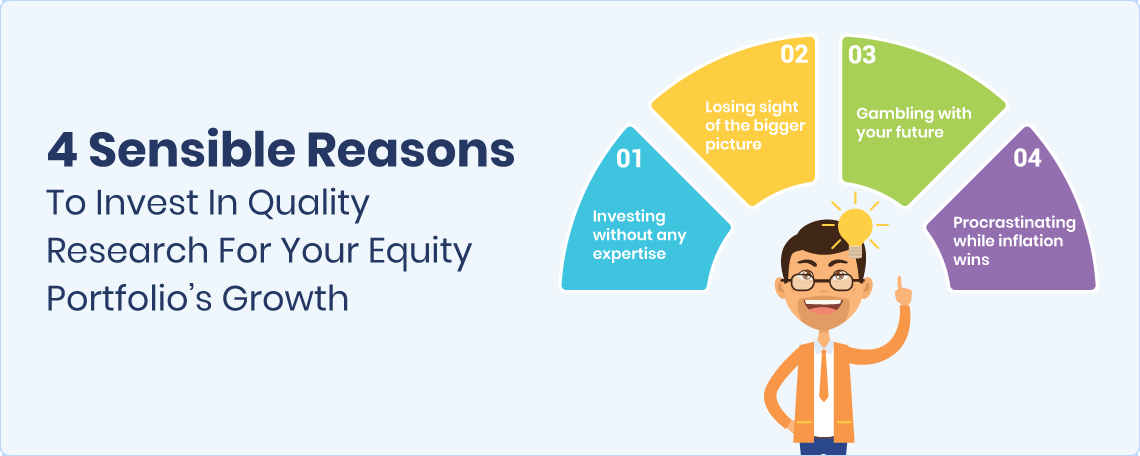Using Market Volatility To Your Advantage
March 09, 2022

It is common for investors to feel overwhelmed when downside volatility strikes. But despite the challenges it unleashes, it also presents various opportunities. Let’s explore the many positive aspects of volatility in the stock market & how an investor can benefit from this necessary evil. These include situations where volatility may actually have hidden useful benefits that can truly enhance your investment decisions & returns.
Volatility Can Bring Investors Out of Their Comfort Zone.
Periods of uninterrupted calm in the market can make investors rather complacent & push investors into a comfort zone. This leads to investors often overpaying for their stocks. Over-optimism in investors also leads them to ignore their actual risk tolerance level & neglect proper allocation, diversification & rebalancing of their portfolio.
A phase of volatility in such times serves as a wake-up call for an investor. Ultimately, one cannot afford to neglect key things such as in-depth research, allocation, diversification & rebalancing while investing in the stock market. It is in the interest of the investor to be cautious of the risk he is undertaking & to keep his portfolio aligned to his risk appetite.
Downside Volatility Inspires a Closer Look at Fundamentals.
In an up & trending market, investors often get caught in the momentum as there is a market-wide rally. This means that intrinsic value takes a backseat & riding the momentum is what an investor focuses on. The emergence of downside volatility can often strike a balance between these two.
It reminds the investors what is truly responsible for a security’s return over time: Fundamentals. A sudden price decline for a strongly performing asset might inspire an investor to re-assess his portfolio & ensure that he is not over-allocated to such stocks. This strengthens the case for a fundamentals-based investing discipline which in our view is a benefit to all types of investors.
It Creates Bargain-Buying Opportunities at Attractive Valuations.
While volatility in itself may be sharp, sudden & unpleasant, it can often result in creating attractive entry price levels giving investors the opportunity to ‘buy low.’ It is very likely that during phases of volatility even fundamentally sound securities are likely to experience pullbacks along with the broader market.
As fundamentals are more influential in determining a security’s long-term returns, instead of getting nervous about increased volatility or a correction in the short term one must think about the potential bargain-buying opportunity in the market & invest accordingly.
It Prevents or Delays ‘Bubble’ Formations.
We’re not suggesting that a period of market calm will necessarily lead to a market bubble nor do we imply that volatility always prevents bubble formations. We merely state that the more a stock’s price outruns its underlying fundamentals, the greater the potential for a sharp correction to follow.
There’s a greater chance that investors will ignore the dangers as it is easy to be neglectful of such scenarios when the market is trading at high valuations and volatility remains low.
In some cases, volatility reins in the market overheating and therefore lowers the chances of a severe downturn by reminding investors of the need to re-assess their investments and to align their buying/selling decisions with fundamentals.
It Helps Investors Understand the Benefits of Active Decision-Making
Ultra-low volatility can lull an investor into a ‘Buy-and-forget’ approach which might include ignoring timely review of the performance of their portfolio or forgetting to rebalance. This attitude can lead to a portfolio that no longer reflects the risk tolerance and long-term goals of its holder.
Volatility may encourage investors to take a more active approach when investing, including timely portfolio adjustments. This is where active management comes in.
Remember: Volatility Works Both Ways
Let’s not forget that volatility works both ways: In addition to the dreaded downside volatility, there are also the much-desired upside swings. The v-shaped trough-to-peak bounces in history suggest that “upside volatility” often do not take long to manifest after a correction.
Prepare for these rapid recoveries which in turn might lead to new highs in the market. Missing post downside volatility rallies or any rallies for that matter, is one of the primary reasons the average investor tends to underperform over time. Investors too often tend to get in their own way, making emotional decisions at just the wrong times.
StockAxis can help investors avoid making that mistake. We help investors enhance their portfolio’s diversification while also helping them stay focused on the long-term, through good times and bad. If you're looking for one of the most potentially profitable ways to cash in on rebounding stocks, we invite you to join the MILARS Portfolio Advisory Services which is based on six guiding principles.



